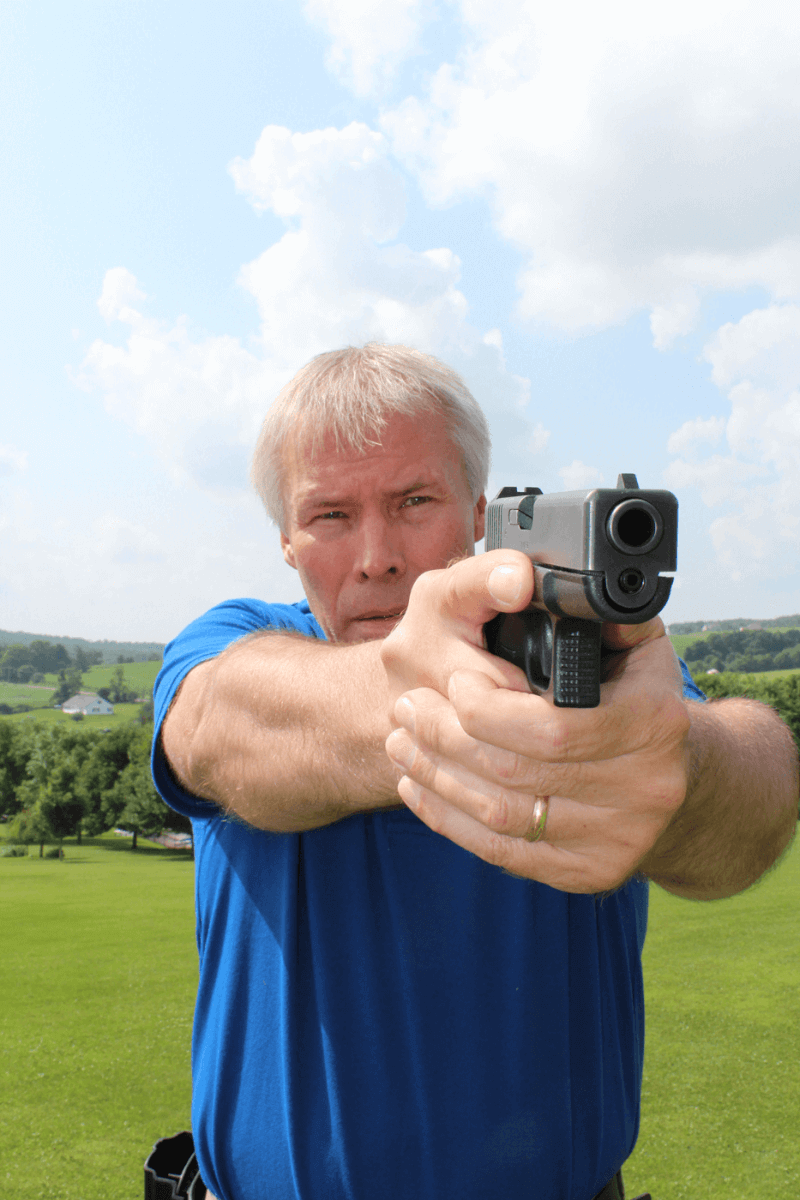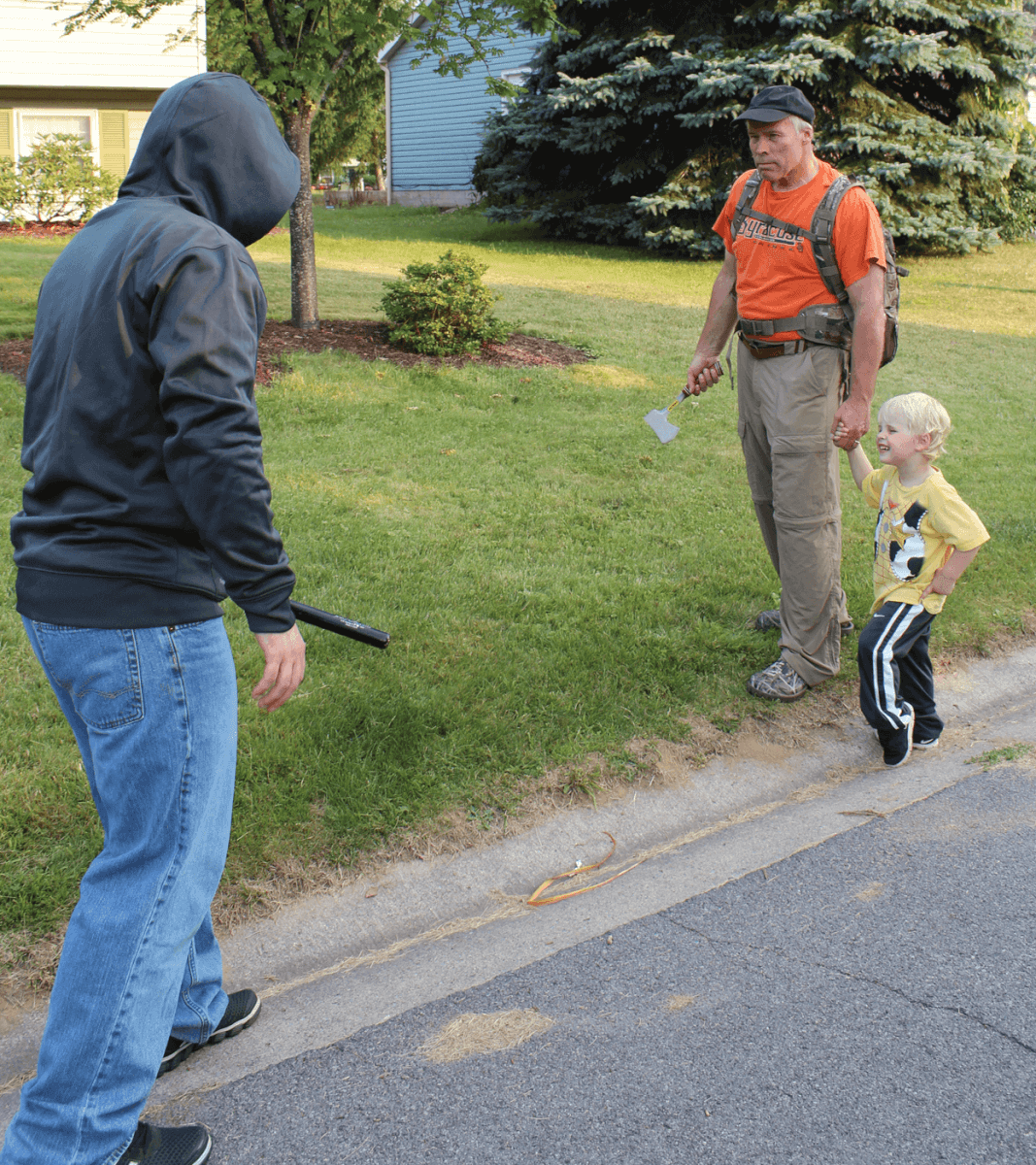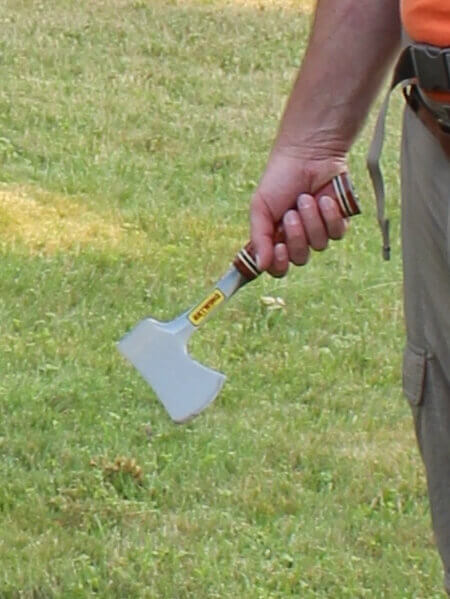Are you prepared to defend yourself, your family and your home? In an extended emergency situation, could you safeguard your limited supplies?
We all would like to think so. But buying a gun and sticking it in a drawer isn’t enough. Taking a couple of karate lessons won’t do. To be truly prepared to defend yourself, you have to take a multi-disciplined approach to personal protection. You have to become proficient in situational awareness, hand-to-hand tactics, less-than-lethal weapons, edged weapons and firearms.
Situational Awareness

In familiar surroundings we all tend to be too lax and comfortable. It can be easy to not take notice of potential threats. In emergency situations – when you’re lost, when you have to bug out because of a natural disaster or civil unrest – you are alert, but your senses can easily become overloaded. Your ability to distinguish real danger from what merely seems frightening can be compromised.
Don’t be an easy target. You have to become accustomed to recognizing signs of impending danger. Do you think someone is following you? Are you suspicious of the group of men at the corner or in the alley or on the trail ahead? Alter your direction. Are they reacting to it?
No one is saying you should walk around in a continual state of paranoia. But you shouldn’t be staring constantly at your cell phone screen either. Stay alert to your surroundings and follow your gut instincts. If walking into a situation is giving you the creeps, pay attention to that feeling and avoid that situation.
If avoidance is not possible, you have to raise your level of readiness to match the heightened possibility of imminent danger. You might unzip your jacket so you can reach for your handgun more easily if necessary. You might put your hand in the pocket where you keep your pepper spray.
Learn to be ever watchful and alert and soon your inner alarm system will be running automatically, much the same way programs are running in the background on your computer.
Not so vulnerable. If you can’t talk your way out of trouble or avoid it, be prepared to meet force with force. Here, the mere display of a hatchet by the older man can turn the tables and send a would-be attacker looking for easier prey. Even the youngster seems to recognize the balance of power shifted.
Hand-to-Hand Tactics
Owning a gun cannot be your only answer to a self-defense situation. In a true survival situation, you must do what is necessary to survive, but not every instance calls for lethal force.
If someone shoves you or punches you, drawing a gun in response can get you in real trouble once order is restored. Chances are greater that you’ll have to fight your way out of trouble without using your firearm.
Not all of us are destined to become martial arts experts. I’m not, maybe you’re not either. But that doesn’t mean you can’t learn a few things along the way. There are ways to use leverage and an opponent’s momentum against him, but that takes training and practice. As with anything else, it’s best to train with the professionals. It will be time and money well-spent.
Sometimes when sizing up an opponent, instead of becoming intimidated by his size and strength, it helps to look at him as a set of weak spots: his eyes, nose, throat, groin, knees. Target those weak spots and you might be able to slow him down enough to enable you to retreat.
Less-Than-Lethal Weapons

Pepper spray and stun guns, where legal, can be good options as long as they’re not your only options. Stun guns can be effective at close range, but won’t help you against multiple attackers or a gunman 10 yards away.
Pepper spray is also a close-range device that can slow an attacker’s advance, allowing you to counter his attack, escape or gain access to another weapon. Don’t rely too heavily on it, however. While I’ve seen some people drop like a rock on getting sprayed, I’ve seen plenty of others continue on unaffected.
Edged Weapons
You don’t want to bring only a knife to a gunfight, but you might want to bring a gun and a knife to a gunfight. In many places carrying a firearm is not an option, so a knife can be a good alternative.
If you are carrying a knife everyday as a tool, why not carry one that also is designed to be a good weapon? If you’re struggling with an attacker who is trying to grab your gun from its holster, a timely slash across his wrists with your knife can prevent him from shooting you with your own weapon.

Firearms
A tiny firearm you always have with you is worthless if you can’t bring it to bear quickly and effectively or if you can’t make an accurate shot under pressure to your adversary’s vitals.
At the same time, a larger firearm you shoot well at the range is equally worthless if you never carry it with you.

Carrying a firearm requires a commitment. When you carry it regularly, it quickly stops being an inconvenience. Soon you’ll feel undressed if you don’t have it with you. However you decide to carry your gun, make sure you can access it quickly and smoothly when someone is bearing down on you.
Find a place where you can practice shooting and moving, using cover and firing from unconventional positions. Practice shooting one-handed, with both your right and left hands. Practice reloading in the dark.

Fight vs. Flight
When should you stand and fight and when should you run? The old saying, “run away and live to fight another day,” has some merit. Sometimes a “tactical retreat” is a wise move.
You don’t want to prolong a fight. Whether the confrontation is with fists or firearms, the longer it continues, the better the chance someone is going to get hurt. You don’t want that someone to be you. You either have to put a decisive end to the fight or you have to retreat at the first good, secure opportunity.
Don’t worry about your pride. Fleeing isn’t the coward’s way out. Your goal is long-term survival. You don’t want your opponent’s friends to arrive on the scene and you find yourself suddenly out-numbered.
However, there are times when you have to stand and fight. If you’re defending a fixed position, retreating might not be an option. If you are cornered or you are trying to save what’s left of your food and water supplies, you might need to fight.
Often attackers are looking for easy victims. Showing you’re vulnerable will often prompt an attack. There can be safety in numbers. But even if you are traveling alone, if you show them that they’re in for a real struggle with an uncertain outcome, they might very well flee at the first opportunity.
Improvised Weapons
Sticks and stones can break your bones, so don’t hesitate to use what’s around you to win a physical confrontation if you are without conventional, dedicated weapons.
Think about it. People were using improvised weapons for thousands of years before firearms were invented.
Keys, ballpoint pens, pointed or high-heel shoes, the leg of a chair, glass bottles and, of course, sticks and stones can all be used as weapons. Household items – kitchen knives, scissors, baseball bats, pipe wrenches, pry bars – can all be effective weapons. Insecticide, ammonia or bleach sprayed in an attacker’s eyes can slow him down.
Remember, simply having these items is no guarantee of success. Swinging a weapon wildly may only prompt an attacker to take it away from you and use it against you. This is where martial arts training can pay dividends. Improvised weapons in the hands of trained warriors can be deadly.

The Warrior Mindset
Carrying or stockpiling weapons is useless unless you have the mindset to use them. Will you strike without hesitation when violence is imminent? Learn to recognize when you are not going to be able to talk your way out of a conflict. Then be decisive. Take the fight out of your opponent by striking hard, fast and repeatedly. Many times if he quickly realizes that you are not the easy target he took you for, he’ll be the one looking to make a hasty retreat.
It’s easier to make the transition from verbal negotiation to physical confrontation if you have experienced it before. Redirect time and money from your other recreational activities and take some martial arts lessons. Learn how it feels to get poked on the nose and knocked down. Learn to keep fighting through discomfort and pain.
Go hunting and experience a kill first-hand. When your life is on the line, it’s no time to be squeamish or reluctant.
Editor’s note: A version of this article first appeared in the May 2015 print issue of American Survival Guide.




